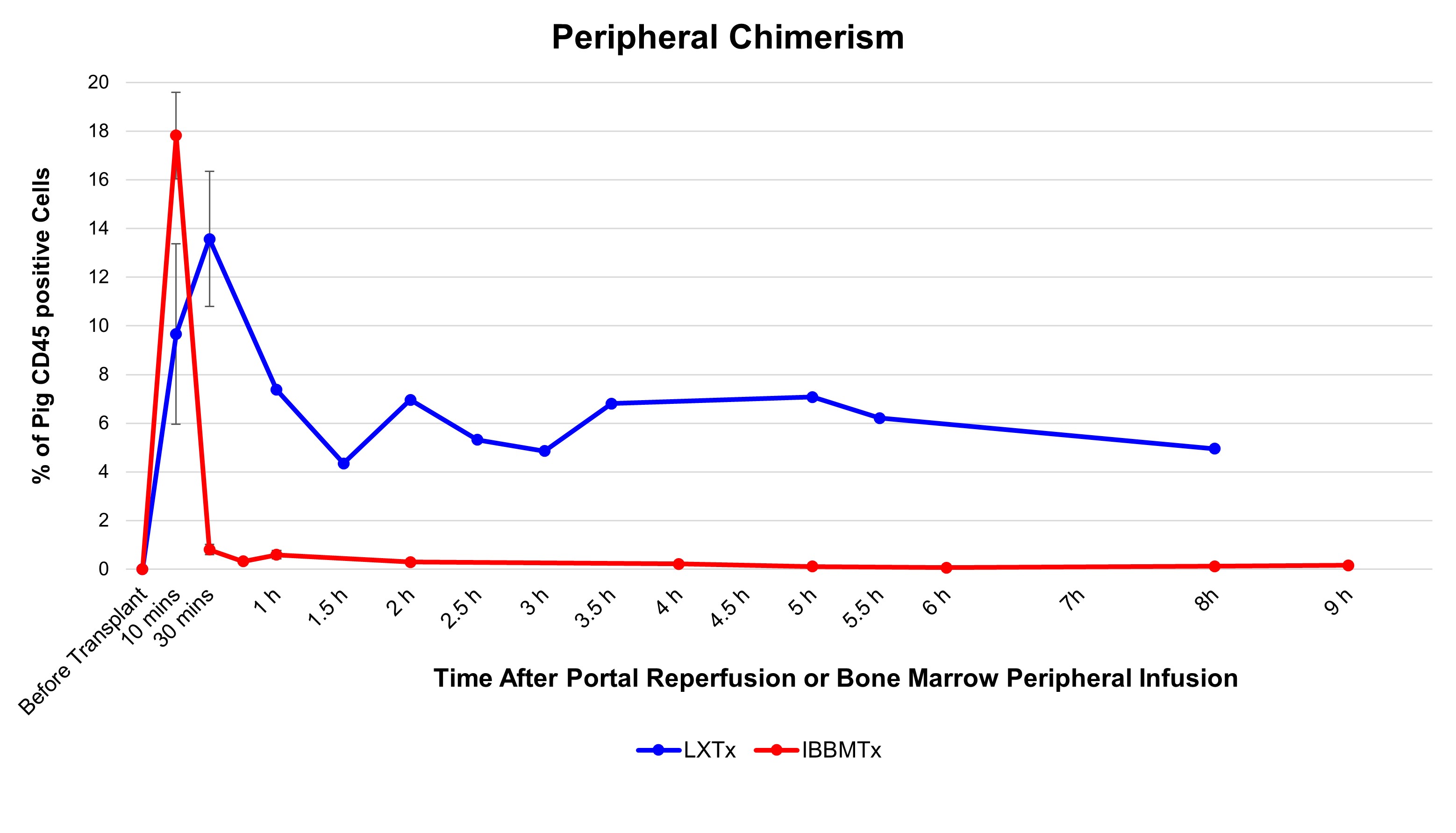Early mixed chimerism after pig to non-human primate liver xenotransplantation
Sho Fujiwara1, M. Esad Gunes1, Daniel H. Wolbrom1, Peter Liou2, Dominik Hajosi1,3, Dilrukshi K. Ekanayake-Alper1, Susan H. Qudus1, Alexander C. Cadelina1, Emilie D. Nygaard1, David Berglund4, Erik Berglund5, David H. Sachs1, Megan Sykes1, Tomoaki Kato2, Greg Nowak1.
1Columbia Center for Translational Immunology, Columbia University, New York, NY, United States; 2Department of Surgery, Columbia University, New York, NY, United States; 3Institute of Comparative Medicine, Columbia University, New York, NY, United States; 4Department of Immunology, Genetics and Pathology, Uppsala University, Uppsala, Sweden; 5Department of Molecular Medicine and Surgery, Karolinska Institute, Stockholm, Sweden
Background: Liver xenotransplantation (LXTx) is a promising approach to overcome the shortage of donor organs for end-stage liver failure patients. Despite the liver's inherent tolerogenic properties in allotransplantation, xenotransplantation faces significant immunological challenges. Mixed chimerism, involving the coexistence of donor and recipient cells, can promote transplant tolerance. However, the presence of mixed chimerism following liver xenotransplantation has not been assessed. This study investigates xenogeneic mixed chimerism early after pig-to-baboon LXTx, assessing the liver graft’s role in establishing chimerism.
Methods: Four pig-to-baboon LXTx were performed using GalT-KO miniature swine as donors. A non-survival experimental model was established to enable monitoring of peripheral blood and collection of liver samples at multiple time points before and after portal vein reperfusion. Peripheral blood and liver mononuclear cells were isolated and analyzed using flow cytometry. Pretransplant samples from both donors and recipients served as baseline controls. Additionally, peripheral chimerism levels were compared with those obtained from intra-bone bone marrow transplantation (IBBMTx) models utilizing human CD47 transgenic and GalT-KO swine. Non-Gal donor-specific antibodies (DSA) were quantified to assess the immune response.
Results: Following portal vein reperfusion, recipients of LXTx exhibited an average peripheral blood chimerism of 12% pig CD45+ cells within 30 minutes. Peripheral mixed chimerism subsequently stabilized between 4.4% and 7.1%, maintaining this range for up to 8 hours post-reperfusion. Baboon CD45+ cells infiltrated the pig liver graft, peaking at 43.5% at 30 minutes post-reperfusion. In contrast, the IBBMTx model initially showed higher chimerism, but this rapidly declined within 30 minutes and remained low (0.1%) thereafter. Peripheral chimerism in LXTx was predominantly characterized by pig CD4+ cells, which peaked at 66.7% at 2.5 hours post-reperfusion. DSA assays indicated decreased levels of IgM and IgG post-reperfusion, with IgA also trending downward, in three of four LXTx recipients.

Conclusion: Our study demonstrates that spontaneous xenogeneic mixed chimerism is achievable in a pig-to-baboon LXTx model. Chimerism persisted for at least 8 hours following portal vein reperfusion and from 30 minutes after reperfusion continued to be higher compared to that observed in IBBMTx. Immunosuppressive protocols designed to support this spontaneous mixed chimerism could potentially enhance graft survival. Our findings may suggest insights into chimerism in xenotransplantation and highlight opportunities for optimizing immunosuppressive strategies to improve long-term LXTx outcomes.
This project was funded by the National Institute of Health (NIH) 5P01AI045897 grant and an unrestricted research grant from Nefro Health and ChoironeX..
[1] Liver xenotransplantation
[2] Chimerism
[3] Intra-bone bone marrow transplantation